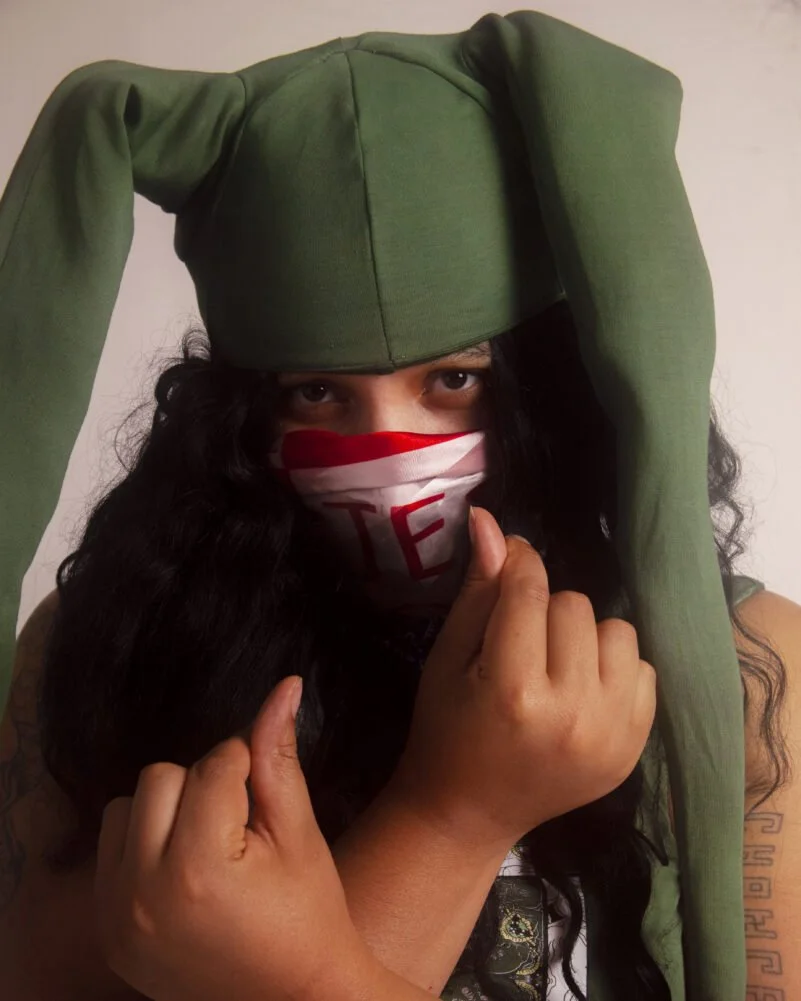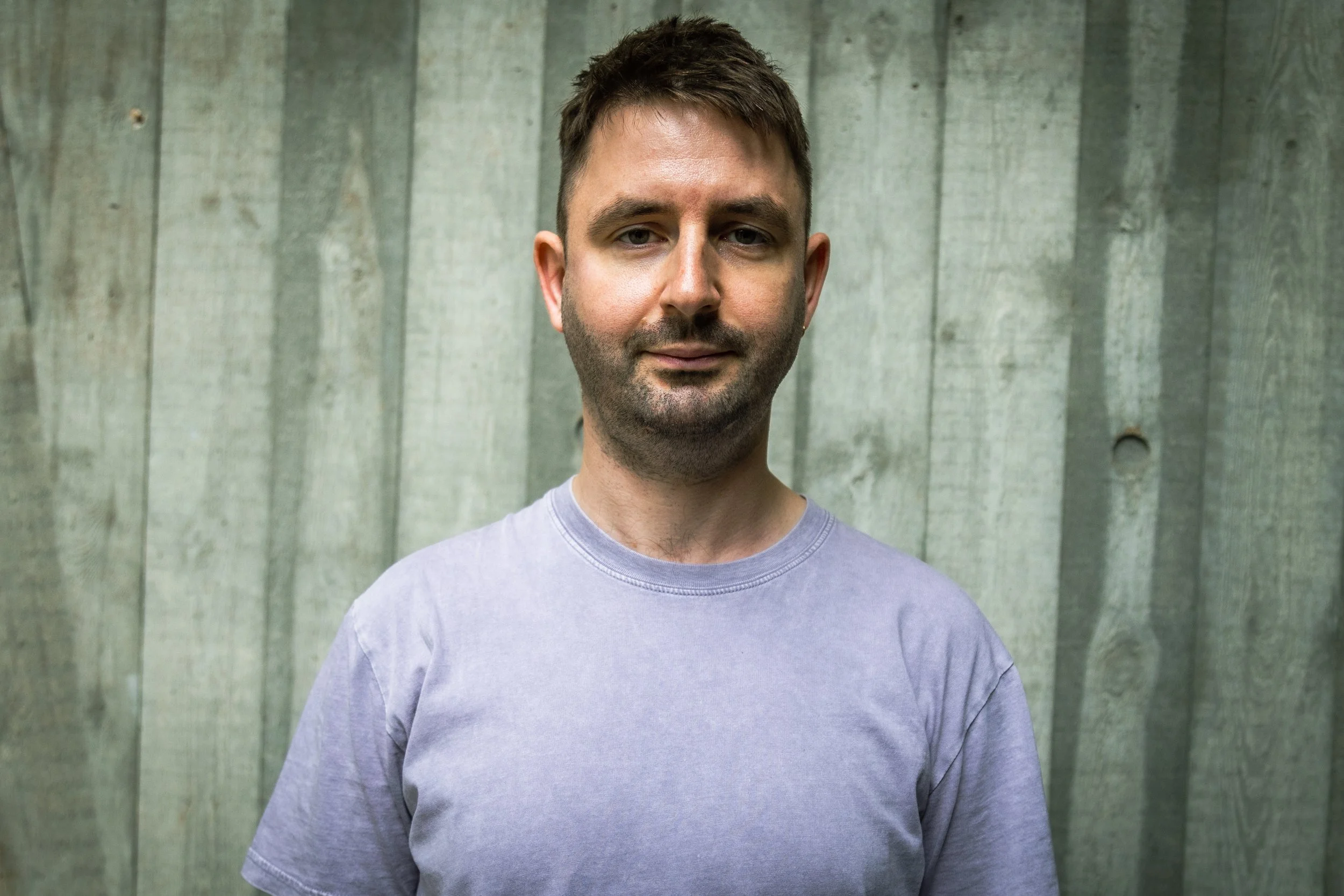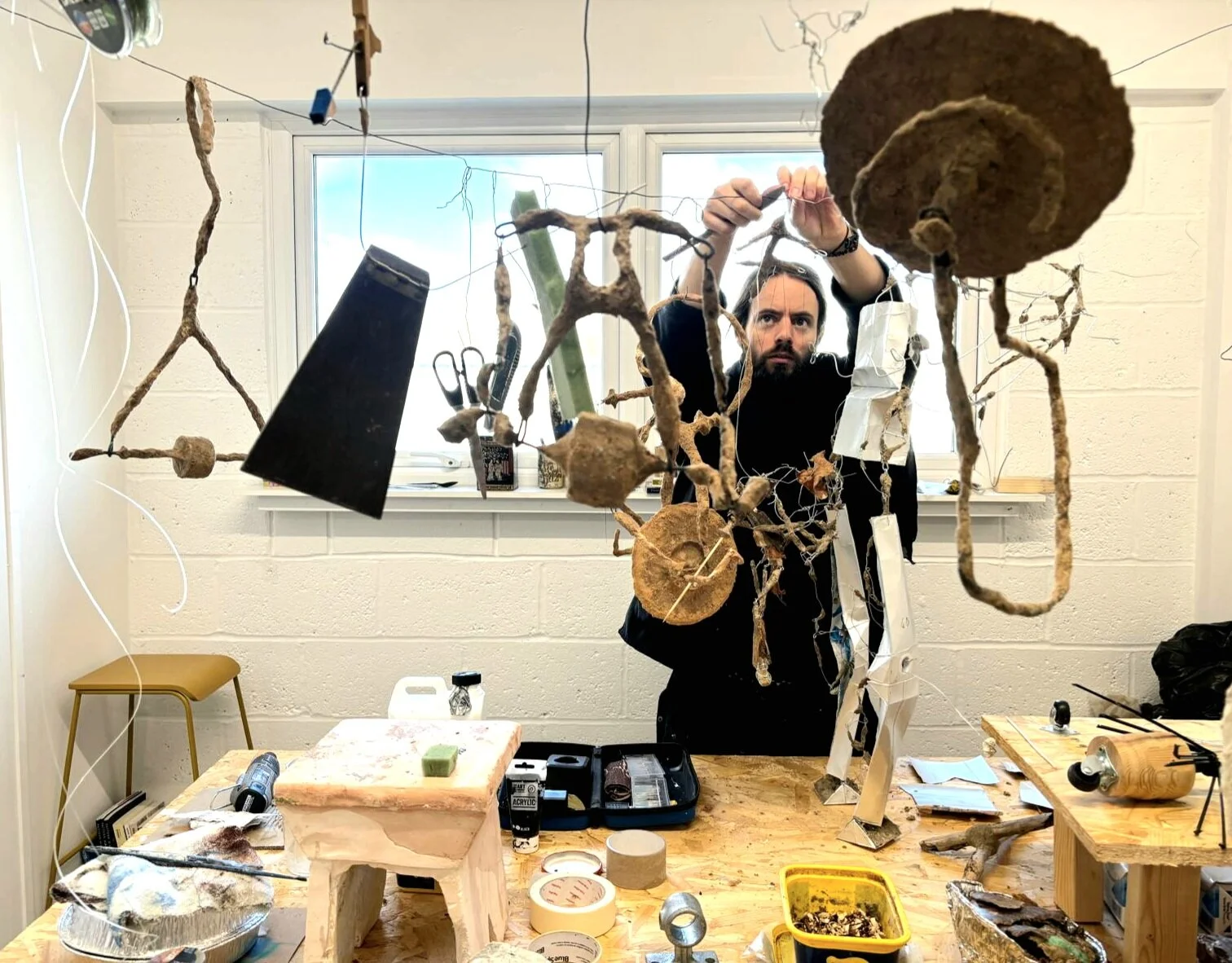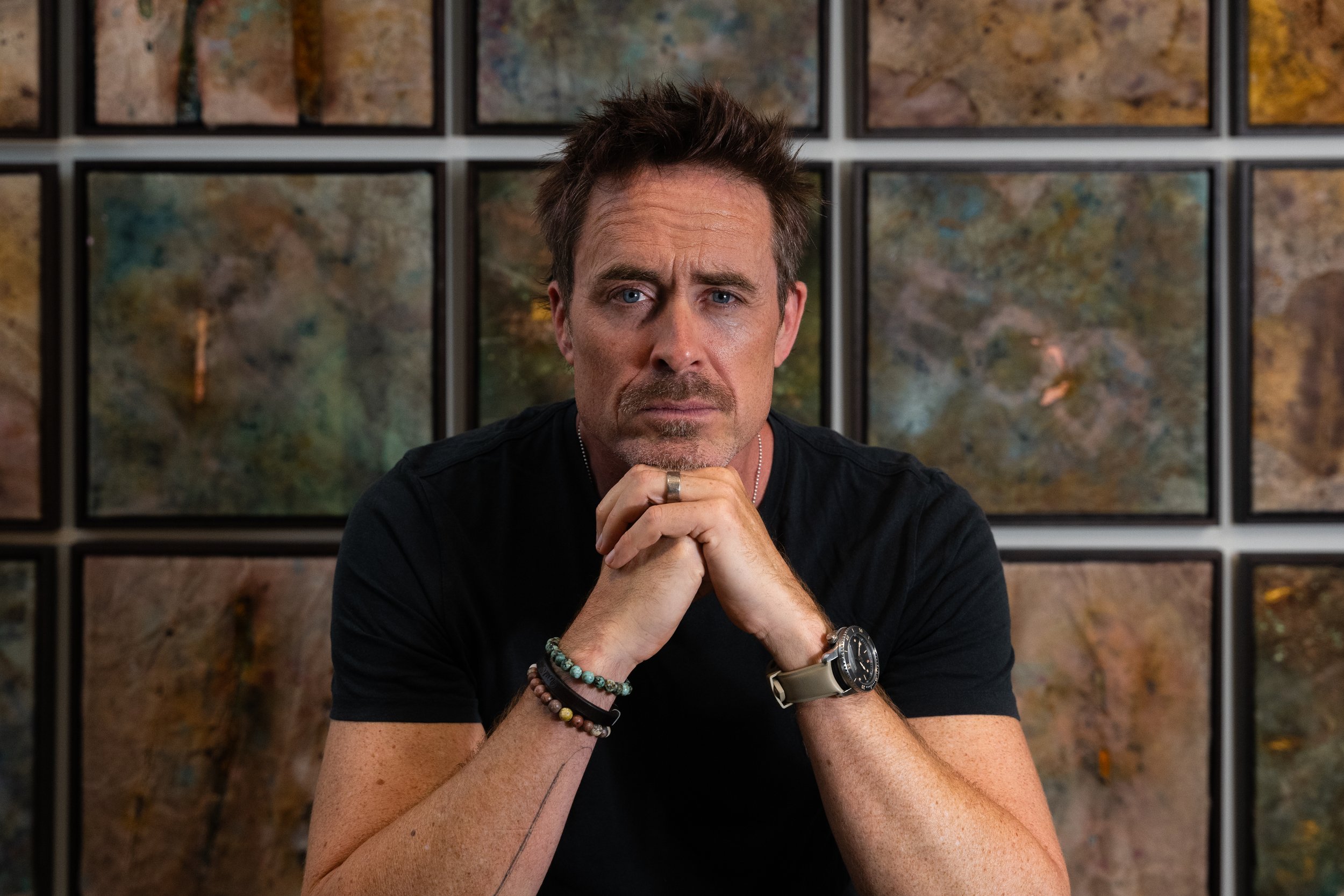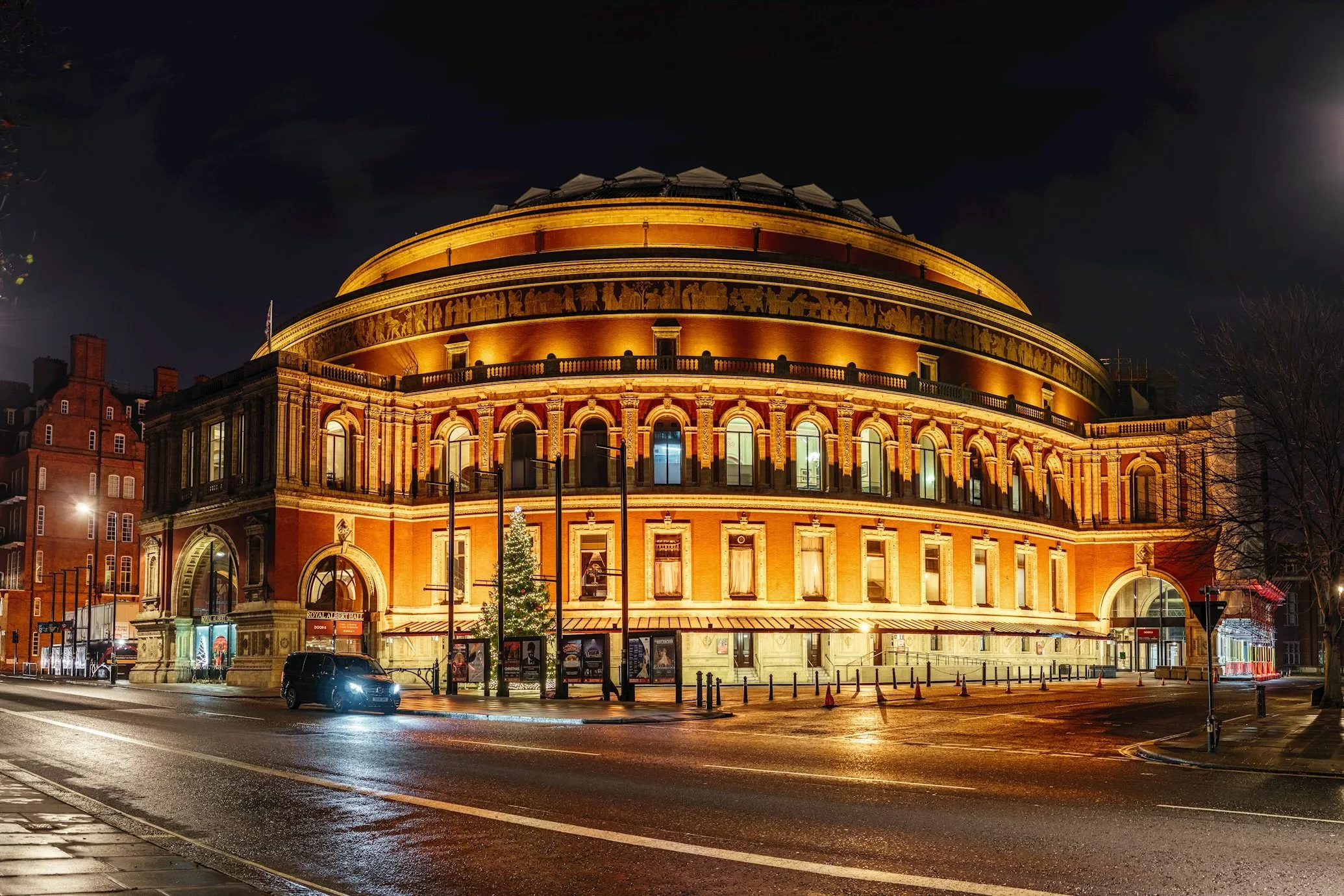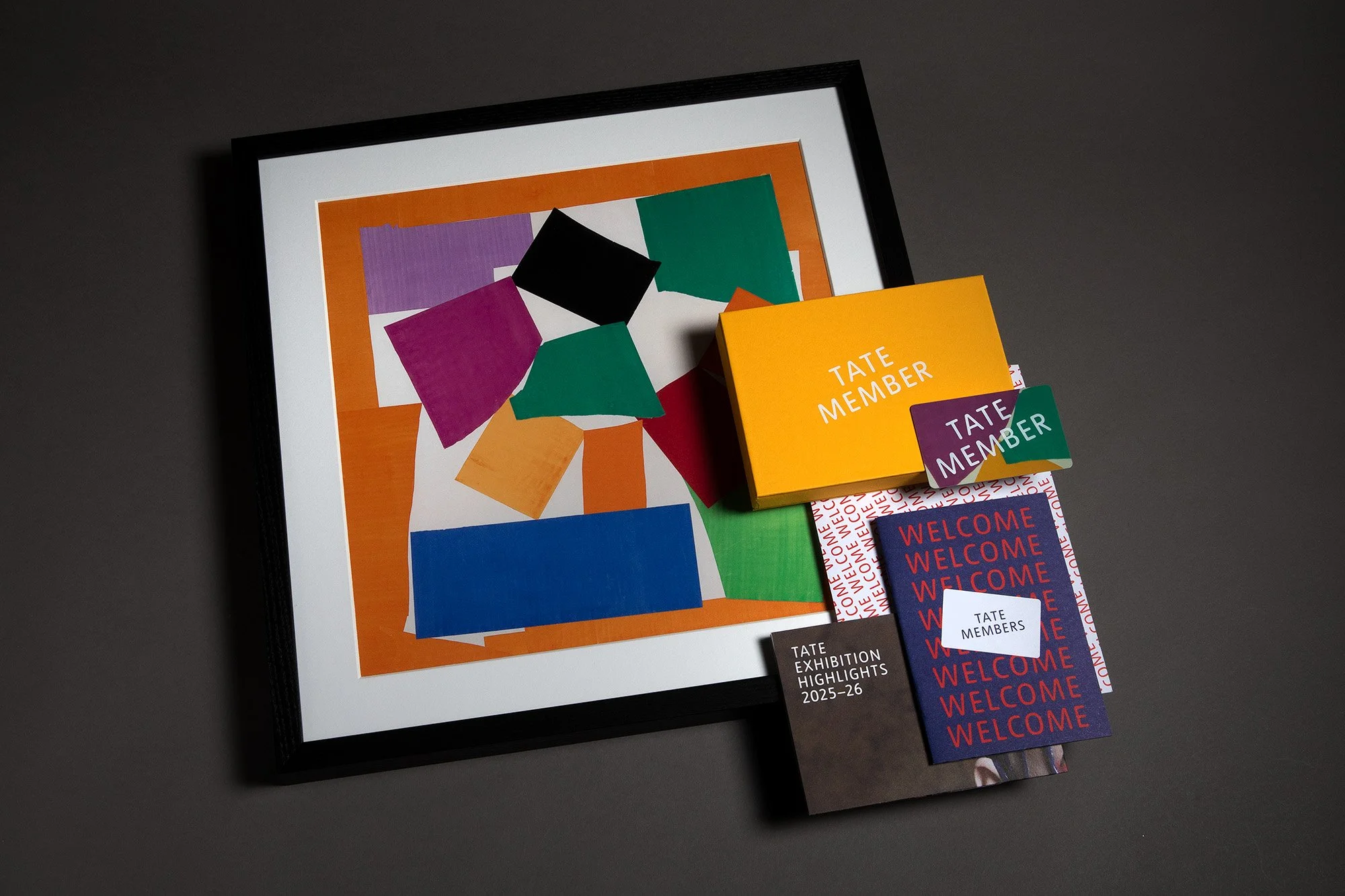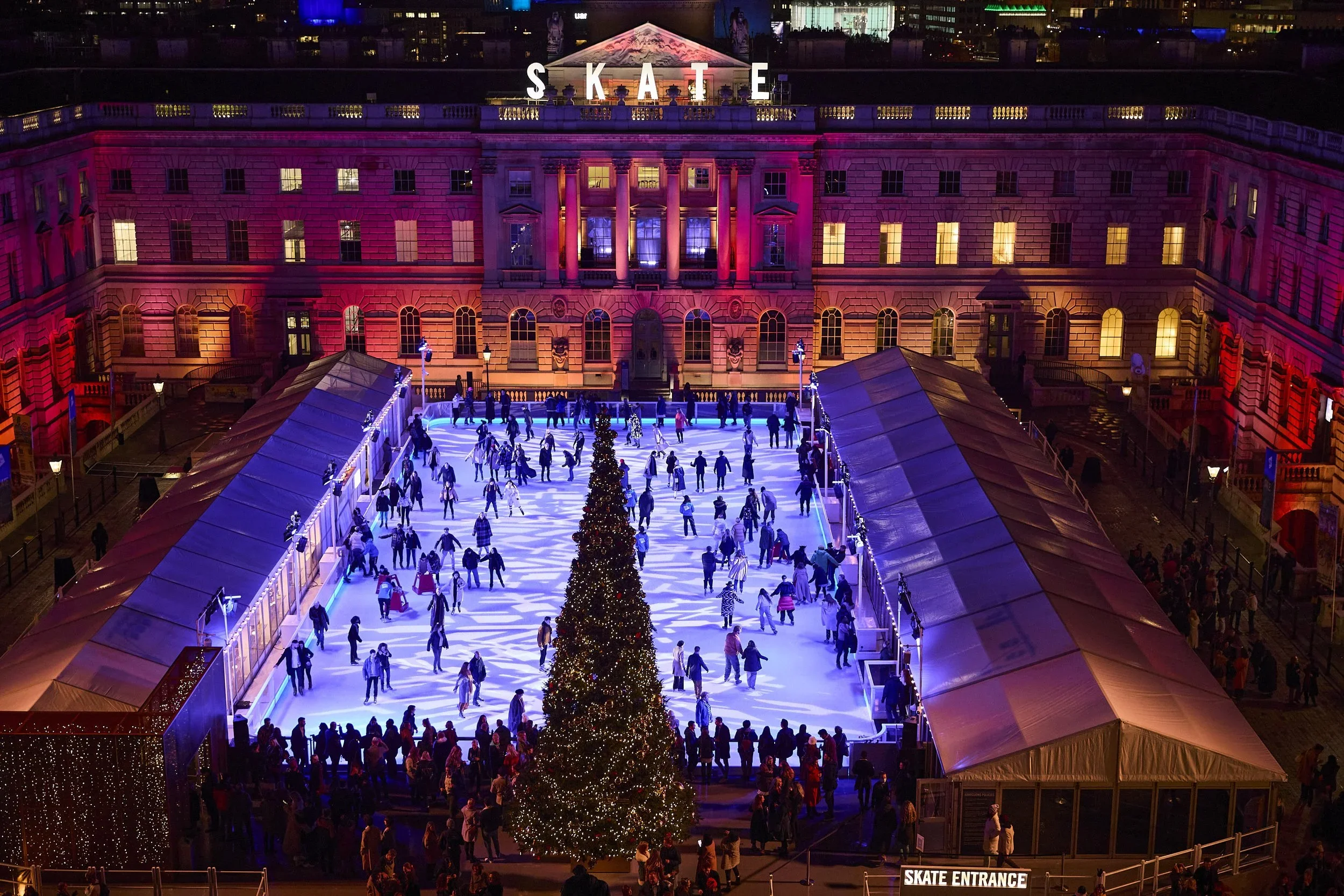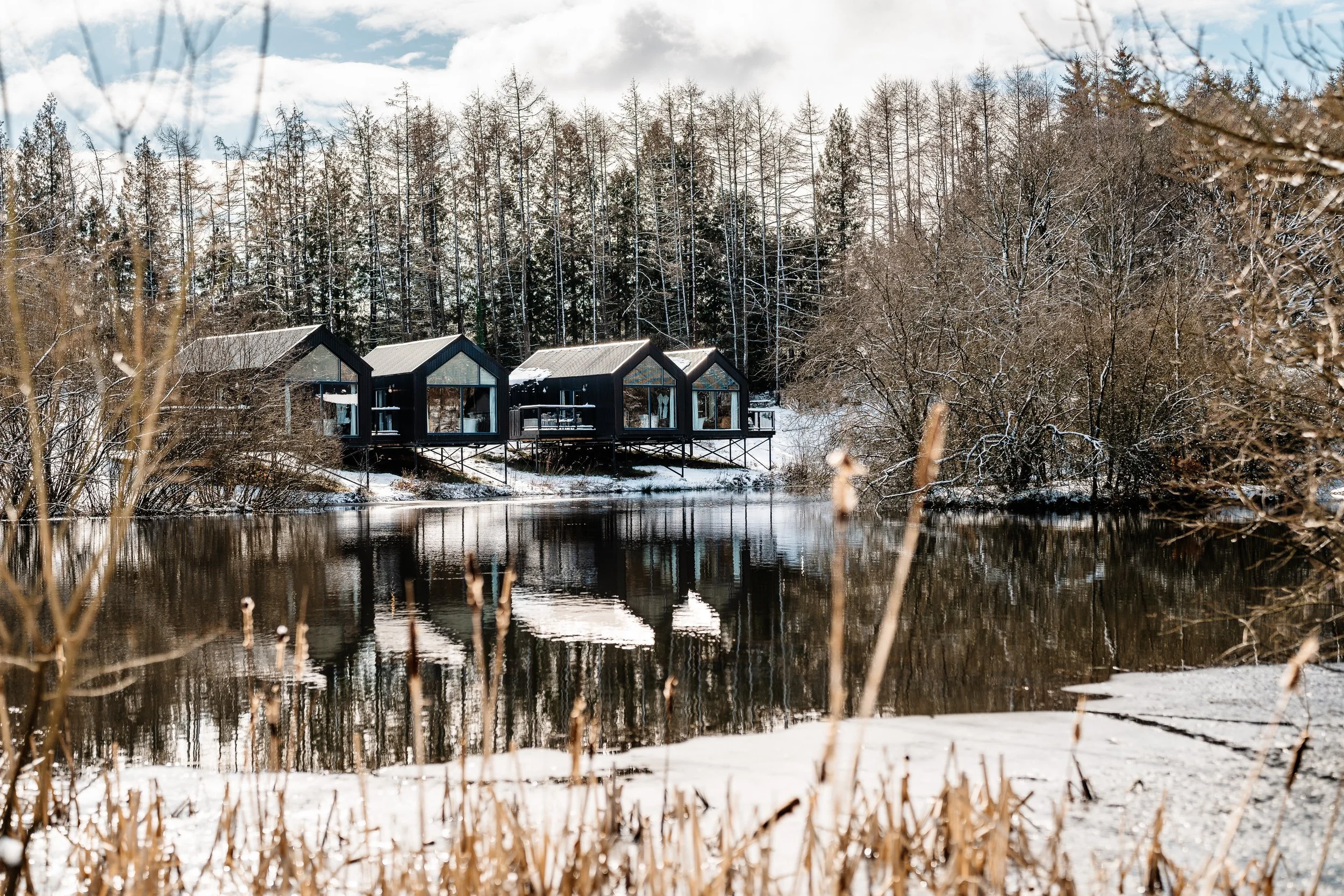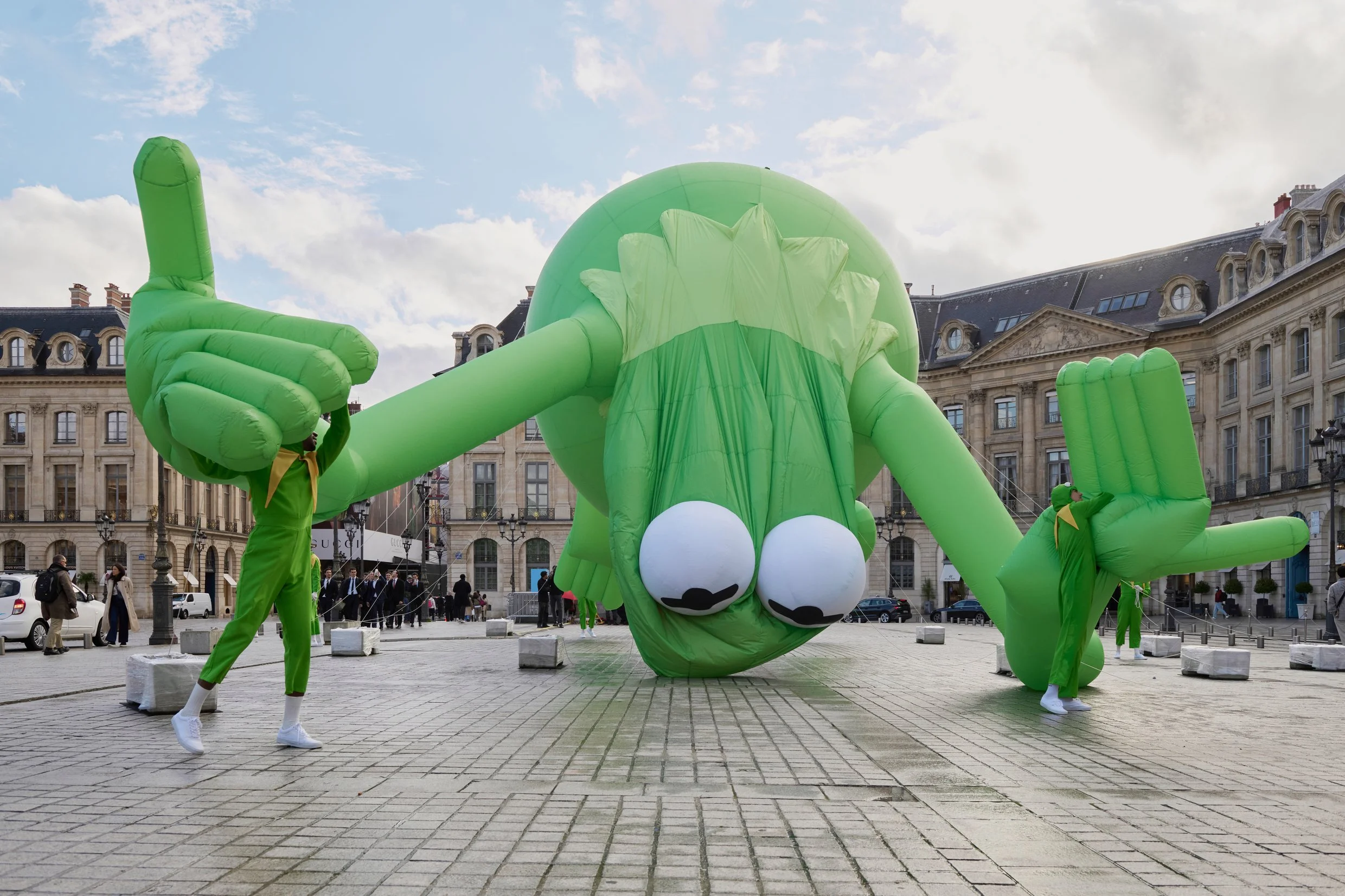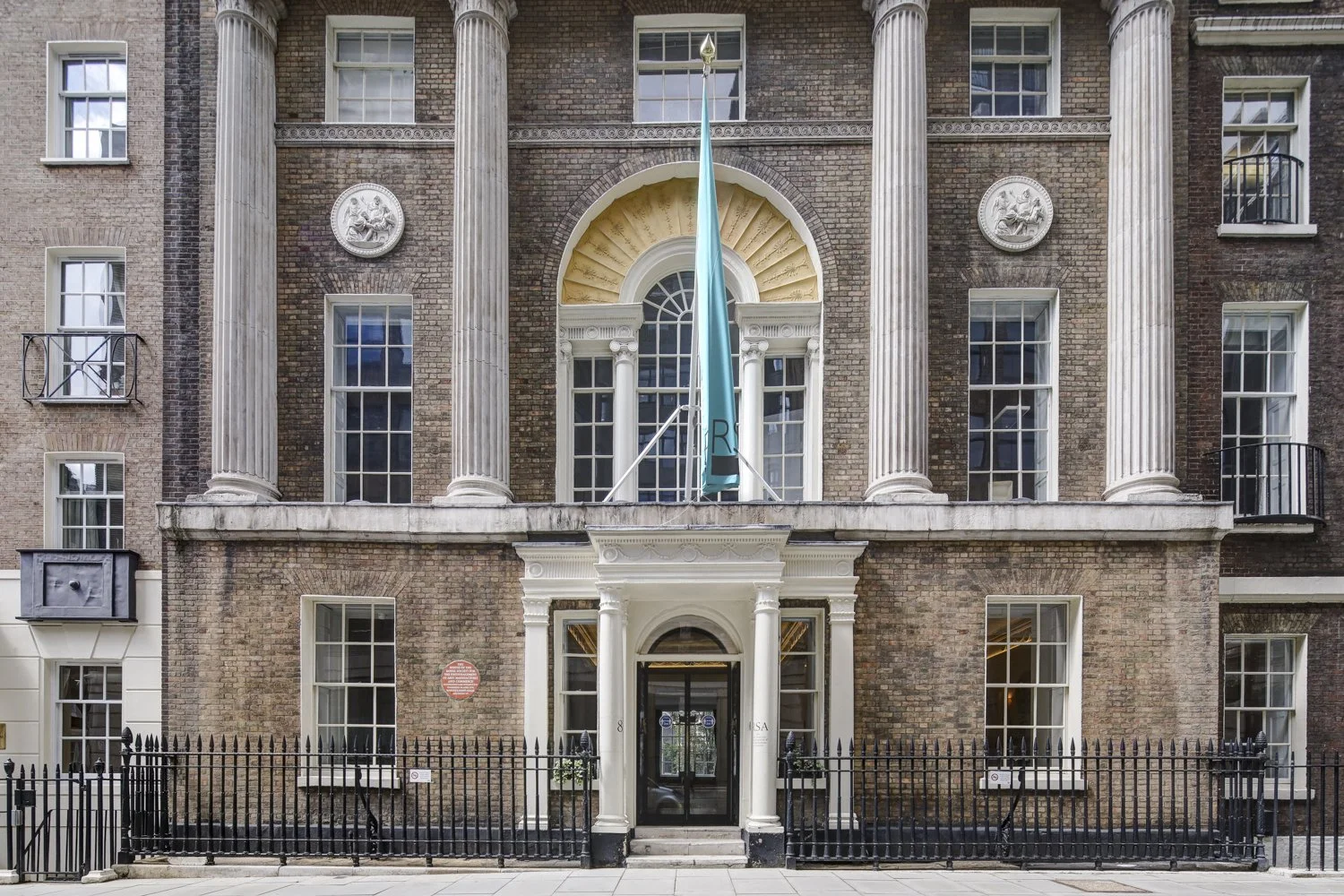In conversation with Oskar Zięta
“When you love what you do, you are determined to achieve the intended goal - the creative process becomes a part of you.”
- Oskar Zięta

Oskar Zięta
Oskar Zięta, architect, process designer and artist, works across disciplines to explore the intersections of form, material and technology. His practice combines design, engineering, art and bionics to produce objects that push the limits of metal and its potential. Using a technique he developed called FiDU, Zięta inflates thin steel sheets with air, shaping them into durable, lightweight structures with a strong sculptural presence.
Zięta’s work spans functional pieces like the PLOPP stool to large scale installations such as Wirand Nawa. These projects go beyond the object itself, engaging with their surroundings and inviting interaction. Whether placed in urban or natural settings, Zięta’s creations act as interventions, transforming space through their presence and material expression.
His latest installation, Whispers, can be seen outside One New Ludgate as part of the London Festival of Architecture 2025. In this interview, Zięta discusses the ideas behind Whispers, the evolution of his methods, and how sculpture can reshape the way we experience public space.
Your work often involves advanced metal-forming techniques, particularly FiDU. How did this approach shape the making of Whispers, and what technical challenges did the project involve?
I already know the technology. I sketch intuitively. Very often, the first sketch is almost identical to the final form. Logistical and organisational details are more often the issue than technological ones. Especially today, when we can use the enormous computing power of computers and perform countless simulations. I have been working with the material for so long that I can create a precise simulation in my head, which I put on paper. It is a bit like riding a bike - once you learn, you will not forget. When you love what you do, you are determined to achieve the intended goal - the creative process becomes a part of you.
The FiDU process is always surprising. It is a dialogue with the material, a process of controlled loss of control. On the one hand, we predict, plan, and calculate precisely, but on the other hand, the material gives a free response. It lives its own life. The challenge is the balance between control and its absence. This is what Whispers illustrated: stories about what happens to the same form when we pump air into it, when there is a hole or vent for pumping air in different places.
What led you to choose the title Whispers, and how does it reflect the ideas or atmosphere you aimed to create with the installation?
The name of the installation has its foundations in the theme of the London Festival of Architecture "Voices".
But what are our voices without the opportunity to share them? A single message sent into the void doesn’t even return as an echo. As senders, and walking, thinking resonance boxes for voices, we seek out recipients for our messages. With the creation of Whispers, a space designed for exchanging voices, we aim to highlight the importance of intimacy in communication. Through conversation - whether spoken softly, in hushed tones, or even in whispers - sitting together in a circle, we can break down barriers and connect meaningfully.
In interpersonal relations, the "circle" or "ring" is a powerful symbol of unity and community, where all participants are equally heard and seen. The project also tells a story about the physical properties of sound, which travels as energy through vibrations - a phenomenon that links us to the world through hearing and sensation. Sound’s ability to resonate with people stems not only from its physical attributes but also from its power to stir emotions, influence our physiology, and foster shared cultural experiences. As it travels, sound bridges the tangible world with the intangible realm of human emotions, creating connections that transcend the material.
Whispers has been unveiled in the heart of Fleet Street for the London Festival of Architecture, in an area rich with history and identity. How did the location influence the concept and design of the installation?
Whispers is situated on Ludgate Hill, a location recognised by the London Festival of Architecture and City Highways as an emerging and attractive venue for a cultural and artistic celebration. Nestled between two of Sir Christopher Wren's architectural masterpieces—St Paul’s Cathedral and St Bride’s Church—this site offers a historically rich and visually striking backdrop. Positioned near City Thameslink station and along one of Fleet Street’s major arteries connecting the City of London with Westminster, the site benefits from high footfall, ensuring wide public engagement.
Moreover, the historical significance of Fleet Street enriches the Whispers installation with deeper cultural resonance. Known as the birthplace of British journalism and a long-standing symbol of the freedom of speech and the voice of society, Fleet Street embodies the ideals of open dialogue and the power of collective expression. By placing the sculpture in this context, it not only celebrates the area’s legacy but also serves as a modern reflection on the importance of amplifying voices and fostering a shared commitment to the principles of free and meaningful communication.

Oskar Zięta. Image credit Laura Korzeniowska
You are known for projects that sit between design, art and architecture. Where does Whispers sit for you — and how do you decide what kind of piece you are making when starting a new commission?
Sculpture is a process, for me it is a process of vindictive study of location, surroundings, and meanings. All my activity is a process. Constantly facing design, deadline, and aesthetic challenges, I treat it as a daily adventure, discovery, and improvement. Appropriate determination allows for development, growth, but also reduction. I always create site-specific. I delve into the history and contexts of places. Each project, each sculpture has deep roots of meaning - some are known from the very beginning of the process, others appear during. Therefore, each place, city, and space has an influence.
You have worked in some of the world’s most iconic spaces — from the Centre Pompidou to the V&A. How does showing work in London, as part of the Festival of Architecture, compare to those earlier experiences?
It is not about comparisons, but about continuation. The Whispers sculpture is a beautiful continuation of the story that I started with the installation Blow & Roll in London. At the V&A, I rolled out the first rolled steel profile in the world. Individual profiles were also presented in the exhibition space of Phillips de Pury in the Saatchi Gallery, where everyone could inflate them using a bicycle pump. It is a beautiful complement to the initiative that we carried out in the place where the Whispers sculpture was intended. The bonding of everything is the FiDU technology, the continuous improvement and optimisation of which allows us to reach the next rung of the ladder. And I hope that this ladder will soon reach space, and it is in extraterrestrial space that we will be able to create art from metal.
Your pieces are often made in steel, but they don’t always look like what people expect from the material. What are you trying to say by working with steel in this way?
My fascination with metal was born when, as a young boy, I spent long hours in my grandfather's blacksmith's workshop. I observed the processing, heavy tools, and hard work. It was the transformation that fascinated me the most – changing the form to give a different meaning to something that previously seemed to be a shapeless, ugly element. I base my actions on this constant transformation today.
I combine the technological deformation of cold metal with the nuance of artistic creation. I maximise the physical potential of the material and extract its optical softness. I implement all my projects based on the sense of an architect, the precision of an engineer, and the sensitivity of a creator. Metal is the ideal medium for this. It is interdisciplinary, recyclable and durable. It is one of the materials of the future.
How do you work with your team during the design and production stages, and what role does collaboration play in bringing a piece like Whispers to life?
Collaboration is the foundation of everything, which is why I often use the plural when I talk about objects. We work interdisciplinarily. Unusually for artists, we are responsible for the entire process. From the first sketch, through experiments, prototyping, searching for the final form. All the way to production, logistics, and assembly. We are a self-sufficient artistic and production machine.
Whispers also showed us how, with the power of our muscles and the will to create/participate, we can create a work of art together.
We should also remember all the partners and sponsors without whom this and many other projects could not have been successful. For Whispers, which is a part of the London Festival of Architecture, I would like to once again thank Fleet Street Quarter, the Ministry of Foreign Affairs of the Republic of Poland, the Polish Cultural Institute in London, Let’s Art Foundation, On & On Designs, and the British Council.
Are there materials or types of public spaces you haven’t yet worked with that you are interested in exploring in future projects?
The space that I most dream of exploring is outer space. We don't learn from books. We create our primers with our own alphabet, the foundation of which is knowledge of the material. This is what we can learn about, explore its secrets and potential. And they are enormous. I don't know if in my lifetime, but I am certain that our pumped metal profiles have enormous space potential. In fact, it is only today that intelligent solutions, algorithm, and the computing power of computers allow us to fully use the potential of FiDU technology. The pace of experimentation and precision allows us to reach much further.

ZietaStudio, Whispers, Photo by Alka Murat
The [Quick] #FLODown:
Best life advice?
Less is less
Last song you listened to?
Hania Rani & Skalpel - Escape
Last book you read?
Structures: Or Why Things Don't Fall Down Paperback - J. E. Gordon
Can't live without...?
deformation
What should the art world be more of and less of?
Less material, more meanings
Oskar Zięta’s latest sculpture, Whispers, is on display outside One New Ludgate as part of the London Festival of Architecture 2025, until Sunday 28 September 2025.
Website: zieta.pl
Instagram: @zieta_studio
Facebook: zietastudio
LinkedIn: zieta-studio
Afra Nur Uğurlu is a visual artist and recent London College of Communication graduate whose practice bridges beauty, fashion, art, and cultural studies. In this interview, we discuss Hinterland, her zine exploring how the Turkish diaspora navigates and challenge es dominant representations…
Townsend Productions is marking the 50th anniversary of the Grunwick Strike (1976–1978) with the return of We Are the Lions, Mr Manager!, a powerful play written and musically directed by Neil Gore and directed by Louise Townsend. The production features Rukmini Sircar as Jayaben Desai. Ahead of the London run, we spoke to Neil Gore and Rukmini Sircar…
Danielle Brathwaite-Shirley lives and works between Berlin and London. Working predominantly in animation, sound, performance and video game development, and with a background in DIY print media and activism, the artist’s practice focuses on intertwining lived experience with fiction to imaginatively retell and archive the stories of Black Trans people…
Aaron Wright is a curator of contemporary performing arts, originally from the Midlands, and currently serves as Head of Performance & Dance at London’s Southbank Centre, a role he took on in 2023. Alongside his work at the Southbank Centre, he runs the queer performance club night Knickerbocker at The Yard Theatre in Hackney Wick…
Dr Lana Locke, Senior Lecturer at Camberwell College of Arts, University of the Arts London, is a multidisciplinary visual artist whose work spans sculpture, painting, drawing, video, and performance. Self-taught for over a decade before gaining postgraduate qualifications, Lana’s practice focuses on sustainability, materiality, and community engagement…
Judith Clark is a curator and fashion exhibition-maker, and currently Professor of Fashion and Museology at the University of the Arts London. She lectures on the MA Fashion Curation and is a founding Director of the Centre for Fashion Curation. From 1997 to 2002, she ran London’s first experimental fashion gallery in Notting Hill…
Lindokuhle Sobekwa is a South African photographer from Katlehong, Johannesburg. Since his first exhibition in 2013, his work on social issues and personal histories—like his photo essay Nyaope—has gained international recognition. A member of Magnum Photos, Sobekwa was recently awarded the 2025 Deutsche Börse Photography Foundation Prize for his project I carry Her Photo with Me…
Sol Bailey Barker is a multidisciplinary artist whose work explores the connections between ecology, mythology, and speculative futures. Through sculpture, sound, and installations, they blend ancient knowledge with emerging technologies to examine humanity’s relationship with the natural world…
Hanna Salomonsson is a London based Swedish ceramic artist. Following a career in landscape architecture, she re-trained in ceramics in 2018. She also holds a BA in Art History, and this combined with her landscape grounding provides a unique vantage point for her ceramic practice…
Lewis Walker is a London-born queer, non-binary movement artist. A former Great Britain gymnast and Acrobatic Gymnastics World Champion, they trained from age 6 to 21 before earning a degree in Contemporary Dance. Their work spans theatre, film, fashion, music, and the commercial sector. Walker continues to choreograph gymnastics competition routines for the Great Britain, Italian and French national teams…
Daniel is a curator-producer dedicated to the social impact of the arts and cross-sector collaboration. He is currently Creative Director & Chief Executive of Old Diorama Arts Centre (ODAC) in Euston, where he has strengthened the centre’s community connections amidst urban transformation…
Peter Bellerby is the founder of Bellerby & Co. Globemakers, a company renowned for its exquisite hand-crafted globes. Established in 2010, the company specialises in meticulously designed pieces that showcase exceptional craftsmanship, positioning Bellerby & Co. as a leader in the globe-making industry…
Gabriele Beveridge is known for her sculptural and conceptual practice that combines materials as diverse as hand-blown glass, photo chemicals, and found images…
Robyn Orlin is a South African dancer and choreographer born in Johannesburg. Nicknamed in South Africa "a permanent irritation", she is well known for reflecting the difficult and complex realities in her country. Robyn integrates different media into her work (text, video, plastic arts) to she investigates a certain theatrical reality which has enabled her to find her unique choreographic vocabulary…
Katrina Palmer, an artist known for exploring materiality, absence, and dislocation, recently spoke to us following her year-long residency at the National Gallery about her exhibition The Touch Report…
Enej Gala is an artist who splits his time primarily between London and his hometown of Nova Gorica, Slovenia. A graduate of the Academy of Fine Arts in Venice and the Royal Academy Schools (2023), Gala first gained our attention with Neighbour’s Harvest, an installation that cleverly combined puppetry and conceptual art…
David Ottone is a Founding Member of Award-winning Spanish theatre company Yllana and has been the Artistic Director of the company since 1991. David has created and directed many theatrical productions which have been seen by more than two million spectators across 44 countries…
Darren Appiagyei is a London-based woodturner whose practice embraces the intrinsic beauty of wood, including its knots, cracks, bark, and grain. Highly inspired by Ghanaian wood carving, Darren explores raw textures and new woods in his work…
Huimin Zhang is an artist specialising in 22K gold, known for her innovative craftsmanship. She combines various cultural techniques, including filigree, engraving, and European gold and silver thread embroidery, to create unique works…
Akinola Davies Jr. is a BAFTA-nominated British-Nigerian filmmaker, artist, and storyteller whose work explores identity, community, and cultural heritage. Straddling both West Africa and the UK, his films examine the impact of colonial history while championing indigenous narratives. As part of the global diaspora, he seeks to highlight the often overlooked stories of Black life across these two worlds.
Hannah Drakeford is a London-based interior designer known for her bold and colourful interiors. She transitioned from a 21-year retail design career to interior design, and has gained popularity on social media where she now shares creative upcycling tutorials and encourages individuality in home decor…
Shula Carter is an East London-based creative with a background in contemporary, ballet, and modern dance. She trained at the Vestry School of Dance and later at LMA London, where she developed skills in commercial, hip hop, and tap dance, alongside stage and screen performance…
Dian Joy is a British-Nigerian interdisciplinary artist whose work delves into the intersections of identity, digital culture, and the fluid boundaries between truth and fiction. Her practice is rooted in examining how narratives evolve and shape perceptions, particularly in the digital age.
Dian Joy is a British-Nigerian interdisciplinary artist whose work delves into the intersections of identity, digital culture, and the fluid boundaries between truth and fiction. Her practice is rooted in examining how narratives evolve and shape perceptions, particularly in the digital age.
John-Paul Pryor is a prominent figure in London’s creative scene, known for his work as an arts writer, creative director, editor, and songwriter for the acclaimed art-rock band The Sirens of Titan…
Jim Murray is an actor, director, conservationist and artist known for Masters of Air (2024) and The Crown (2016). Murray first came to prominence as an artist in 2023 with his acclaimed inaugural exhibition In Flow, where his dynamic abstract paintings were hung in conversation with John Constable’s The Dark Sid…
Anthony Daley is an abstract expressionist painter known for his vibrant, large-scale works that explore beauty through intense colour and light. His art bridges the past and present, drawing inspiration from the Old Masters as well as diverse sources like literature, science, poetry, and nature.
Rachel Kneebone’s work explores the relationship between the body and states of being such as movement, stasis, and renewal. Through her porcelain sculptures, she examines transformation and metamorphosis, reflecting on what it means to inhabit the body and be alive…
Saff Williams is the Curatorial Director at Brookfield Properties, bringing over fifteen years of experience in the arts sector…
Sam Borkson and Arturo Sandoval III, the acclaimed LA-based artists behind the renowned collective "FriendsWithYou," are the creative minds behind "Little Cloud World," now on display in Covent Garden. During their recent visit to London, we had the privilege of speaking with them about their creative process and the inspiration behind this captivating project.
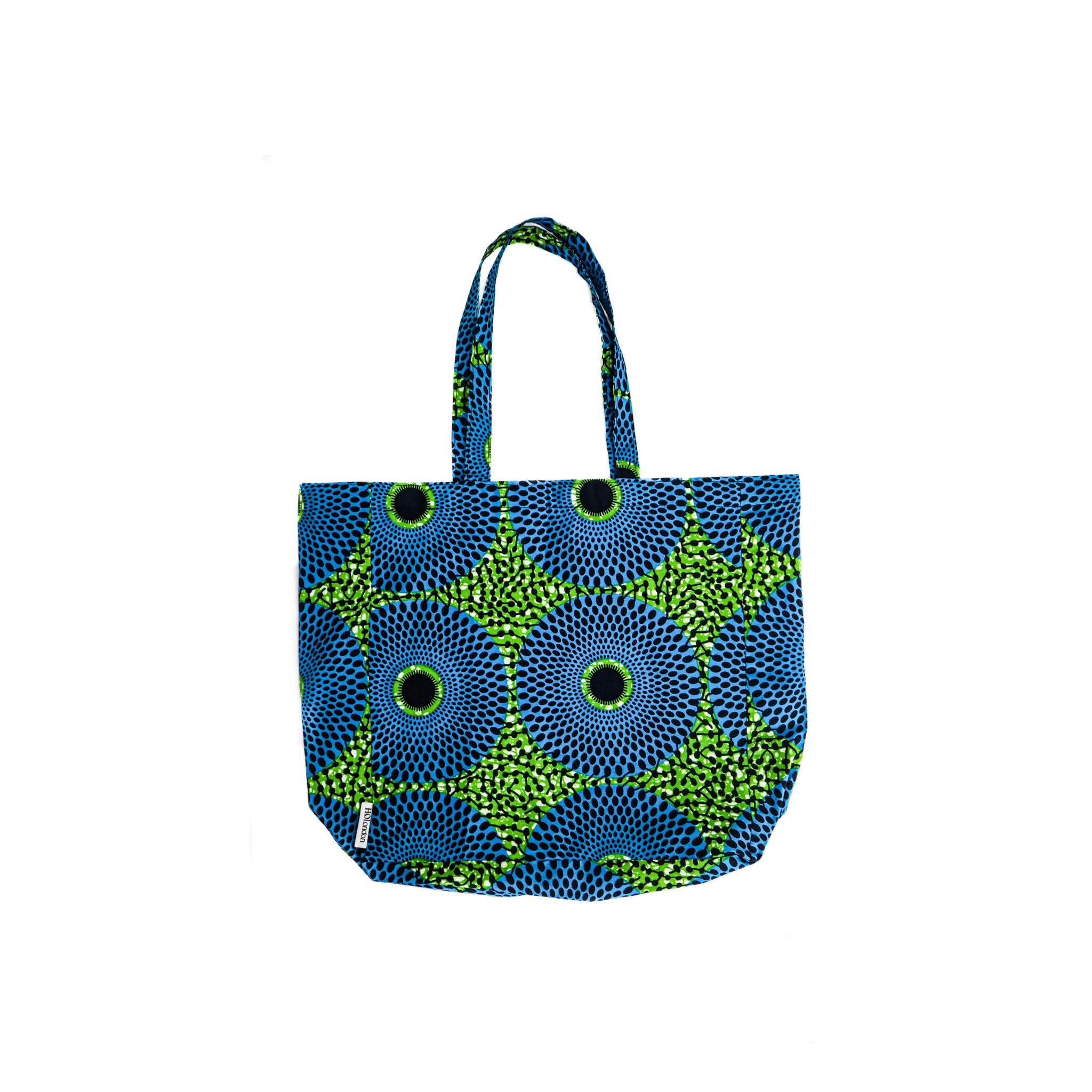
Discover London’s unmissable 2026 fashion exhibitions, from over 200 pieces of the late Queen’s wardrobe at The King’s Gallery to the V&A’s showcase of Elsa Schiaparelli’s avant-garde designs and artistic collaborations…
The National Gallery will host the first ever UK exhibition dedicated solely to Catharina van Hemessen (1527/28 – after 1565), one of Europe’s earliest female painters, in 2027…
This week in London, enjoy festive events including Carols at the Royal Albert Hall, LSO concerts, designer charity pop-ups, late-night shopping, art exhibitions, film screenings, foodie experiences, last-chance shows, and volunteer opportunities across the city…
Explore Belgravia this Christmas with a festive pub crawl through London’s most charming historic pubs, from The Grenadier’s cosy mews hideaway to The Nags Head’s quirky classic tavern…
From the joys of Christmas at Kew to the lively Smithfield meat auction, and from major concerts and ballets to intimate workshops and family-friendly trails, the city offers an extraordinary mix of experiences. This guide brings together the very best of Christmas in London…
This guide highlights some of the must-see art exhibitions to visit over the festive period in London, including the days between Christmas and New Year’s. From major retrospectives of international masters such as Kerry James Marshall, Wayne Thiebaud, and Anna Ancher, to engaging contemporary works by Danielle Brathwaite-Shirley, Jennie Baptiste, and Tanoa Sasraku…
London’s cultural scene, a gallery or museum membership is the perfect alternative to another pair of socks. From unlimited access to exhibitions and exclusive events to discounts in shops and cafés, these memberships offer experiences that can be enjoyed throughout the year, while also supporting the vital work of arts organisations…
Your guide to London’s can’t-miss events this week, 17–23 November 2025, from Cabaret Voltaire live at ICA to Ballet Shoes at the National Theatre and The Evolution of UK Jazz at the Barbican…
Charlotte Winifred Guérard is a London-based artist and recent graduate of the Royal Academy of Arts School, where she was recognised as a Paul Smith’s Foundation scholar for her artistic achievement. Her work has been exhibited at the Royal Academy, Coleman Project Space, Fitzrovia Gallery, Messums and Palmer Gallery, and she has completed prestigious residencies including…
This week in London, you can enjoy festive ice skating, Christmas lights, jazz and classical concerts, and a range of art exhibitions. Highlights include Skate at Somerset House, Christmas at Kew, the EFG Jazz Festival, and the Taylor Wessing Photo Portrait Prize 2025…
From the 6th to the 9th of November, the leading West African art fair Art X Lagos celebrates its 10th birthday at the Federal Palace on Victoria Island. Founded by Tokini Peterside-Schwebig in 2016, the fair has become an unmissable event in the global art calendar, attracting galleries from over 70 countries and participants from 170 countries since its launch…
If you’re after something bold, queer and completely uncategorisable this November, you need to know about KUNSTY, the Southbank Centre’s brand new four day performance series running from 5-8 November 2025…
London’s most beloved Christmas activity is back. As festive cheer returns to the city, with twinkling lights and the scent of mulled wine drifting through the air, for many Londoners and visitors from further afield, nothing quite captures the spirit of the city at Christmas like strapping on a pair of skates and stepping onto the ice…
As the crisp autumn air settles over London, the iconic gardens of Berkeley Square are once again hosting one of the most anticipated gatherings in the art and antiques world: the LAPADA Fair 2025, running from 28 October to 2 November…
November is a lively time to be in London, with the festive season in full swing and the city buzzing with events. From skating at Somerset House to Christmas lights switch-ons and festive markets like the Southbank Centre Winter Market, there are plenty of ways to embrace the holiday spirit. Beyond the seasonal festivities, London’s cultural calendar is brimming with art, music, and performance…
As far as weekend getaways go, this 70-acre estate offers a peaceful country escape with all the best elements of a traditional hotel experience. Staffordshire, arguably, is not yet on the map for luxury and leisure but set in the heart of the beautiful Staffordshire Moorlands, The Tawny surely is a beacon of things to come…
Art Basel Paris returns to the Grand Palais for its second edition from 24–26 October 2025, bringing together 206 leading galleries from 41 countries and territories. Below is our guide to seven artists not to miss at this year’s edition, each presenting distinctive work through their galleries…
Art Basel Paris 2025’s Public Programme turns the city into a stage for contemporary art, placing bold, large-scale works in streets, courtyards, and cultural landmarks - all free to visit. From a dreamy opera of 30 surreal figures at Palais d’Iéna to a colossal Kermit the Frog balloon looming over Place Vendôme, here is our guide to five standout works from the Art Basel Public Programme that you simply cannot miss…
Frieze London 2025 returns to Regent’s Park with a dynamic mix of emerging and established galleries, reaffirming the city’s creative pulse. Highlights include Esther Schipper’s dreamlike works by Sarah Buckner, Gagosian’s vibrant installation by Lauren Halsey, and Pace’s meditative paintings by William Monk. From Do Ho Suh’s ethereal fabric architectures at Lehmann Maupin…
Paris launches into its own spectacular celebration of art each October, transforming the city into a hub for collectors, curators, and cultural enthusiasts. From the grandeur of Art Basel Paris at the newly renovated Grand Palais to the focused energy of Paris Internationale, OFFSCREEN, AKAA and Menart, each fair contributes something unique to the city’s vibrant art scene.
British Ceramics Biennial is back and better than ever. Running until 19 October 2025, the dynamic programme of free exhibitions, screenings, talks and events is proving a hit with both locals and critics…and just an hour and a half’s train away from London, it’s well worth a day trip…
Echoes of Migration is the flagship summit to launch new not-for-profit platform Art Voyage this autumn. Echoes of Migration officially inaugurates Art Voyage’s innovative, itinerant cultural programme…and gears us up for what is in store for the Art Voyage Biennial….
Betty Ogundipe (b. 2001) is a multidisciplinary artist of Nigerian heritage whose work explores resilience, femininity, and the power of love and resistance. Her debut solo exhibition, LOVE/FIGHT at Tache Gallery…
The V&A’s Marie Antoinette Style, sponsored by Manolo Blahnik, is being hailed as the first landmark exhibition in the UK devoted to France’s most infamous Queen of Fashion. It is a glittering journey through silk, flamboyance and legacy….
Malta is fast becoming one of the Mediterranean’s hottest destinations, offering sun-soaked beaches into October, a thriving arts and culture scene, and stunning architecture and landscapes…
This October in London offers everything from Frieze and the BFI Film Festival to Peggy Gou, the London Literature Festival, and Halloween at Kew.
Discover the best restaurants in Malta, where to eat, drink and enjoy authentic Maltese food and Michelin-star dining…



